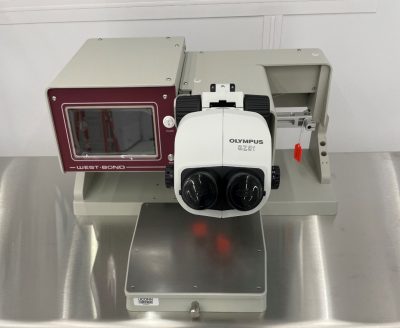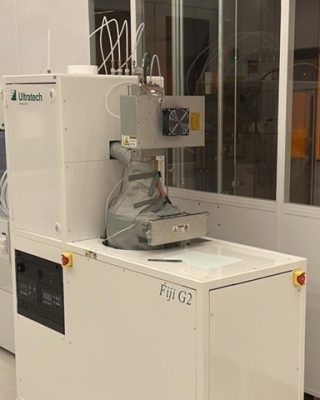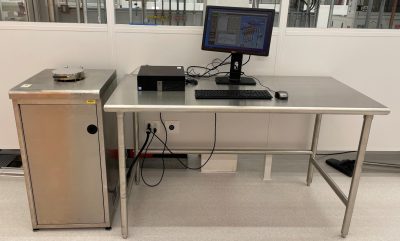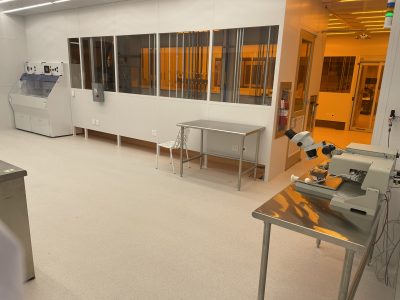Bay 2: Deposition

Wire Bonder
West Bond 7KF Wire Bonder
Wire Bonder utilizes the tool head from the E series that can bond it all: 45º wedge, 90º feed for wire and ribbon, and ball bonding. A simple exchange of clamp assemblies, bond tool, and wire path provided with the software mode allows conventional 45º wire feed, deep access wire or ribbon, ball bonding, insulated wire, and single point tab/lead bonding. All programmed bond variables as well as machine settings for each bond mode are retained in the machine’s memory.
The West Bond 7KF model in our facility is specialized for low-frequency operations at 63 kHz, using wedge and ball bonding techniques. It allows programmable control over bond settings, including ultrasonic bond power (0-5 W), time (1-1000 ms), force (15-130 g), and tool heating temperature (40-240 °C). The system features pure vertical Z and orthogonal X, Y, Z axes motion with 8:1 micromanipulator arm for precise manual positioning and pneumatic braking of all axes during bonding. It supports versatile 45° and 90° (deep access) tool head configurations for wedge as well as ball bonding. Currently, it is set up in the 90o configuration for ball-wedge bonding and uses 1 mil (25 µm) gold wire.

Plasma ALD (Atomic Layer Deposition)
Ultratech (Veeco) Fiji G2 Plasma-Enhanced ALD
The Ultratech (Veeco) Fiji G2 plasma-enhanced ALD system is an advanced high-vacuum tool used for atomic layer deposition, capable of precisely depositing thin films to exact atomic thickness specifications. It offers a wide range of deposition modes thanks to its flexible architecture and the ability to configure various precursors and plasma gases. It supports both plasma-enhanced and thermal deposition methods (operational modes: and offers a versatile system design that allows for various combinations of precursor chemicals and plasma gases.
This system is a modular, high-vacuum ALD system that offers various deposition modes (continuous, exposure, plasma) with a wide range of precursors (individually heatable to 200°C) and plasma gases (N2, O2, Ar, H2). It is equipped with an inductively coupled plasma source for remote plasma generation and a deposition chamber capable of heating up to 500 oC. It accommodates substrates up to 8 inches (200 mm) in diameter and 1 inch (20 mm) in height.

ALD (Atomic Layer Deposition) System
Cambridge Nanotech ALD Savannah S100
ALD system delivers outstanding deposition results and provides maximum experimental flexibility for ALD research, development, and production applications. Each Savannah system enables digital control of your thin films: grow one layer at a time from the nanoscale to the micro-scale The unique Exposure Mode enables conformal film growth on ultra-high aspect ratio features found in materials such as porous foams, fibers, and nanogels. Continuous Mode enables the rapid growth of perfectly dense, uniform, and conformal films.
This system offers various precursors for atomically precise growth of thin films (e.g. Al2O3, ZnO, TiO2, etc.) on substrates up to 4 inches in diameter at growth temperatures as high as 300 °C.

Other Equipment
There are six wet chemistry fume hoods, a combination of stainless steel and polymer units designed for various chemical processing tasks (cleaning, wet etching, etc.) employed in semiconductor and microelectronic device fabrication.
Hood 5 in Bay Area 2 (Acid/Caustic Hood) is equipped with the safety equipment and chemicals necessary for acidic wafer development and wafer cleaning processes. Acetone, isopropanol, and DI-water are offered in the hoods.
